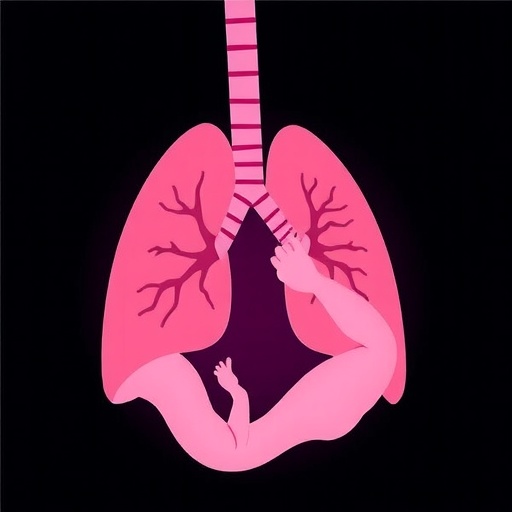In neonatal intensive care units across the United States, the management of very preterm infants with pulmonary complications is increasingly turning towards sophisticated pharmacological strategies, particularly the administration of pulmonary vasodilators. A groundbreaking study led by Vega, T.F., Huber, M., Jensen, E.A., and their colleagues, recently published in the Journal of Perinatology, dives deep into this evolving therapeutic landscape, shedding light on usage patterns, efficacy, and emerging trends that could redefine neonatal respiratory care in the years ahead.
The pulmonary vascular bed in very preterm infants, especially those born before 32 weeks of gestation, is exceptionally vulnerable to injury and remodeling due to a confluence of factors such as immature lung development, oxidative stress, mechanical ventilation, and inflammation. These challenges frequently culminate in pulmonary hypertension (PH), a condition characterized by elevated vascular resistance and pressure within the pulmonary arteries, which dramatically worsens outcomes. The study emphasizes that while pulmonary vasodilators have become a cornerstone for treating PH in older populations, their utilization in extremely premature neonates is still fraught with uncertainties due to a lack of comprehensive data.
Vega and colleagues embarked on an extensive retrospective analysis encompassing multiple children’s hospitals across the United States, focusing on the administration patterns of vasodilatory agents including sildenafil, inhaled nitric oxide (iNO), and newer agents like bosentan and milrinone. Their dataset spans preterm infants diagnosed with or at risk for PH, carefully capturing temporal trends, dosing variations, and concomitant therapies. This real-world evidence provides a critical window into how frontline clinicians navigate the delicate balance of maximizing pulmonary vasodilation without triggering systemic hypotension or other systemic side effects.
One of the pivotal revelations of the study is the surprisingly widespread off-label use of sildenafil, a phosphodiesterase type 5 inhibitor originally designed for adult pulmonary arterial hypertension. Clinicians appear drawn to its oral formulation and vasodilatory effect, utilizing it even in infants with borderline pulmonary pressures. However, Vega’s team cautions that despite its growing popularity, dosing regimens remain inconsistent, underscoring an urgent need for standardized protocols grounded in robust pharmacokinetic and pharmacodynamic modeling.
Inhaled nitric oxide, historically the gold standard for selective pulmonary vasodilation in term infants with hypoxic respiratory failure, maintains a nuanced role in very preterm infants. The study elucidates that although iNO offers the advantage of targeted action with minimal systemic effects, its benefits in extremely preterm infants are not unequivocally supported by randomized data. The authors note that many centers reserve iNO for acute PH crises or for those infants who demonstrate insufficient response to oral agents, highlighting the need for prospective trials to clarify its niche in preterm neonatal care.
Equally fascinating is the exploration of emerging therapies such as bosentan, an endothelin receptor antagonist, and milrinone, a phosphodiesterase type 3 inhibitor with both inotropic and vasodilatory effects. While their usage remains infrequent, Vega’s analysis points to an experimental yet promising paradigm in which multi-target vasodilation might mitigate the complex pathophysiology underlying neonatal PH. Such multi-modal approaches appear particularly attractive in refractory cases, although the authors advocate for vigilant monitoring given the delicate hemodynamics in very preterm infants.
A particularly innovative aspect of the research methodology involved integrating patient-level data with hospital-specific protocols, enabling the team to discern institutional variations and their impact on outcomes. This granular approach uncovered large disparities in vasodilator use intensity, timing of initiation, and duration of therapy, which intriguingly correlated with diverse clinical outcomes ranging from survival to long-term neurodevelopmental impairment. Such heterogeneity signals an unmet need for consensus guidelines reflecting evidence-based best practices to harmonize care delivery.
The study also delves into pharmacological safety, meticulously examining adverse event profiles. Through comprehensive chart reviews and adverse event reporting systems, Vega and colleagues documented that while pulmonary vasodilators were generally well tolerated, episodes of systemic hypotension, bleeding complications, and alterations in systemic vascular resistance occasionally necessitated medication adjustments or discontinuation. These findings underscore the critical importance of real-time hemodynamic monitoring, coupled with the development of predictive biomarkers to tailor individualized therapy and mitigate risks.
Beyond its clinical insights, the investigation sheds light on the broader implications for neonatal healthcare systems. The utilization trends uncovered by the study reflect an evolving therapeutic zeitgeist, fueled by expanding mechanistic understanding of neonatal pulmonary vascular disease, technological advances in non-invasive monitoring, and a growing emphasis on precision medicine. The authors argue that this momentum must be matched by investment in multicenter randomized controlled trials, integrated registries, and translational research bridging molecular pathogenesis with bedside management.
An intriguing angle explored relates to the potential long-term impact of pulmonary vasodilator exposure on lung development and function. Given that pulmonary vasculature maturation is intimately intertwined with alveolar growth during the neonatal period, the study raises provocative questions about whether pharmacologically modulating vascular tone could influence developmental trajectories. Vega’s group advocates for longitudinal follow-up studies incorporating pulmonary function testing and imaging modalities to decipher these complex developmental dynamics.
Complementing the clinical discourse, the authors highlight ongoing efforts to optimize delivery modalities of pulmonary vasodilators. Innovations such as aerosolized formulations, targeted nanocarriers, and pharmacogenomic-guided dosing hold promise to enhance efficacy while minimizing off-target effects. If successfully translated to clinical practice, these advances could herald a paradigm shift towards safer, more effective pulmonary vascular therapies tailored specifically for the nuances of preterm infant physiology.
In synthesizing their findings, Vega and colleagues underscore a broader message for neonatologists and pediatric pulmonologists alike: pulmonary vasodilator therapy in very preterm infants remains a promising yet nascent frontier. The delicate intricacies of neonatal pulmonary vascular biology challenge simplistic therapeutic approaches, necessitating a multifaceted and evidence-driven framework that integrates pharmacology, physiology, and individualized patient characteristics.
As the neonatal community grapples with the complexities of chronic lung disease and pulmonary hypertension, this comprehensive study offers a clarion call to accelerate research and refine clinical practice. It confirms that pulmonary vasodilators, when judiciously employed, have the potential to significantly improve respiratory outcomes for the most vulnerable patients. Yet, it equally reminds us that vigilance, precision, and collaborative inquiry are essential to unlocking their full therapeutic promise.
Looking forward, the dynamic interplay between clinical innovation, mechanistic research, and health system adaptation will shape the trajectory of pulmonary vasodilator use in neonatal care. With a growing body of evidence and technological advances on the horizon, the field stands at an inflection point—poised to transform the management of preterm lung disease through nuanced and compassionate pharmacotherapy grounded in cutting-edge science.
Subject of Research: Pulmonary vasodilator use and therapeutic patterns in very preterm infants with pulmonary hypertension in United States children’s hospitals.
Article Title: Pulmonary vasodilator use in very preterm infants in United States children’s hospitals.
Article References:
Vega, T.F., Huber, M., Jensen, E.A. et al. Pulmonary vasodilator use in very preterm infants in United States children’s hospitals. J Perinatol (2025). https://doi.org/10.1038/s41372-025-02309-x
Image Credits: AI Generated
DOI: https://doi.org/10.1038/s41372-025-02309-x
Tags: challenges in treating preterm infants with PHefficacy of pulmonary vasodilators in neonatologyemerging trends in neonatal respiratory careimpact of lung immaturity on pulmonary healthmanagement of pulmonary complications in neonatesneonatal intensive care unit practicesneonatal vasodilator administration patternspharmacological strategies for neonatal respiratory issuespulmonary hypertension in very preterm infantspulmonary vasodilator therapy in preterm infantsresearch on pulmonary vascular health in infantsretrospective study on vasodilator use





